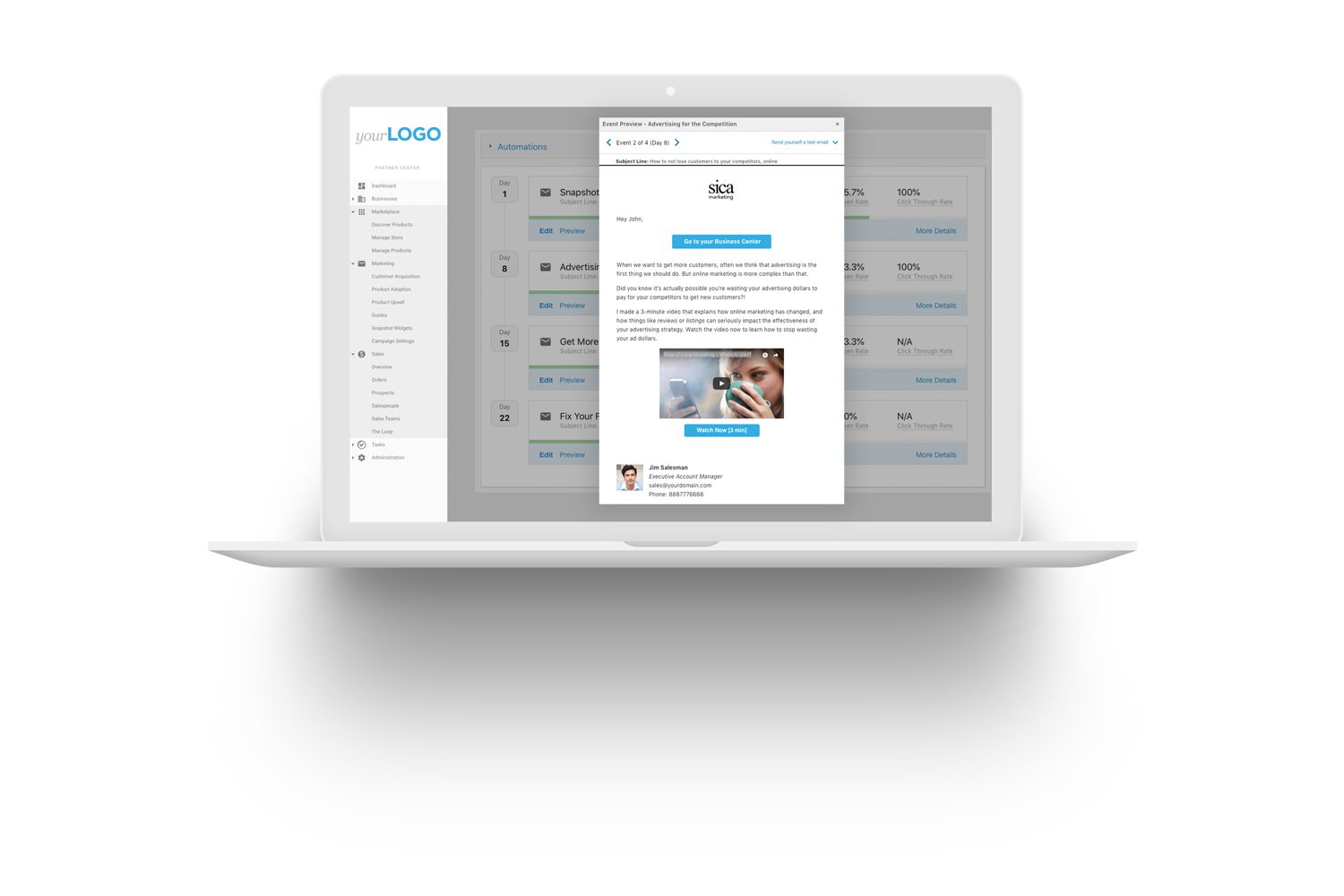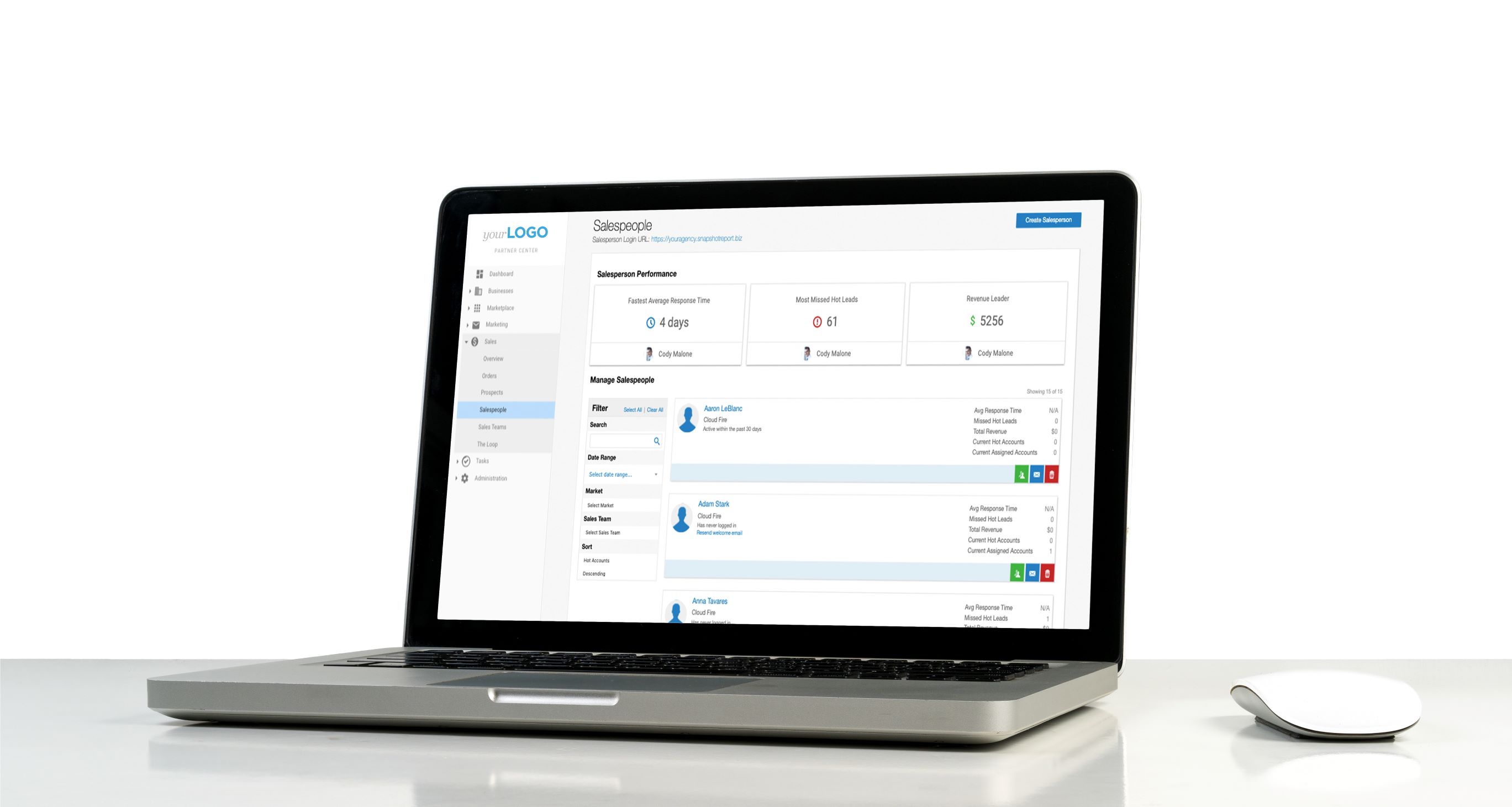Modern Sales Enablement: Tools and Software to Increase Your Revenue
A lot goes into making a sale. To close that deal, sales reps need key information and tools at their fingertips.
Here’s where sales enablement comes in to give sales reps the information they need to do their jobs better.
And this is possible with sales enablement software and tools.
According to Forrester Principal Analyst Mary Shea, today's best companies give sellers modern enablement tools. These sales enablement tools improve processes and provide "better experiences for buyers.”
In the blog post “A Deeper Dive into Forrester’s Sales Enablement 2020 Predictions,” Shea shares, “These tools help sellers deliver personalized experiences at scale, increase seller preparedness for each interaction, and capture and automate data collection.”
And this doesn’t apply only to enterprise companies.
Today companies like digital agencies can subscribe to software as a service (SaaS) with minimal cost and effort.
Here, we define modern sales enablement and highlight the most important software and tools companies need today.
What is Sales Enablement?
Sales enablement is providing your sales professionals with the knowledge, skills, tools and processes to increase sales and maximize customer success. This includes curating and delivering onboarding, training resources, sales content, marketing materials, and essential sales and marketing software.
Within any business, sale enablement covers a wide range of topics. Teams or leaders are typically responsible for identifying sales knowledge and skills gaps and developing strategies or programs to target these gaps. This might include coming up with onboarding and training materials or selecting the technology and software for sales.
When it comes to sales content, sales enablement plays a big role in curating and packaging suitable collateral for sales reps. Sales content includes sales playbooks, presentations, best practices, decks, and product demos.
A strong sales enablement team is also responsible for driving the adoption and training of sales software and tools. In fact, the right software and tools support and provide sales enablement.
Who is Responsible for Sales Enablement?
The responsibility of sales enablement can fall under various people in sales or marketing. Ideally, it is a joint effort between sales and marketing teams. The actual job title varies depending on the company and size. Some common leaders responsible for sales enablement include the Vice President of Sales, Vice President of Marketing, marketing managers, product managers, and project managers.
If you don’t have a designated sales enablement team or leader, it can be hard to pin-point who is responsible for this job. Sales and marketing are two very different departments. One picks up where the other ends. Marketing brings in leads, sales closes them.
But digital marketing is blurring this separation. Why? Well, they’ve done a great job of nailing the buyer’s journey. Buyers today love learning online and engaging with digital content until they’re ready to buy. Some don’t even want to talk to sales.
But as Shea points out, “Buyers are people, and people crave human connections.”
For this reason, they’re known to reach out during every stage of the journey.
This means sellers have to not only be ready at every stage, but also provide the same experience as their digital counterparts.
“Modern buyers engage with a varied mix of digital and human assets at all stages of the buying journey,” says Shea.
So, modern sales enablement is the long-awaited alignment between sales and marketing.
And an effective sales enablement strategy is one that picks and chooses the right technology stack for the brand.
Three Tips on Developing a Sales Enablement Strategy
Every sales enablement strategy is unique. In fact, the strategy you implement should be based on the analysis of your sales, the department, and the current information and tools they’re using.
Here are three things to consider when developing your sales enablement strategy:
1. Designate a Leader or Team
Before you can develop a strategy, identify the team or person in charge of sales enablement. If you don’t plan to hire a new employee, take a look at the people and departments within your company, especially key people in your sales and marketing departments. The best person for the job must have a unique set of skills, including sales and sales enablement experience. Make room for this function within your company and align the people and teams to make it happen.
2. Invest in Sales Enablement Technology
There’s a difference between sales software and sales enablement technology. Sales enablement technology supports your strategy to empower your sales teams. At the core, it must offer collaboration and communication between departments. For example, a sales CRM that’s connected to a marketing automation platform.
The right sales enablement technology also speeds up processes. If your sales team has to sign into 10 different tools and software, chances are they are double documenting and wasting time toggling between software.
Instead, take the time to find sales enablement software that’s integrated, such as an end-to-end platform.
In addition to saving time, sales enablement software can help your company save money on sales enablement personnel. While it’s a good idea to have a team or leader in charge of sales enablement, smaller companies might not have the resources to invest in a new department or role in the company.
If you’re faced with a lack of resources, sales enablement software can help. The right software can bring together sales and marketing efforts all in the same place.
3. Be Mindful of Analytics and Reporting
As you research sales enablement software, remember that your strategy depends on analysis and reporting. Consider the sales reports and analytics that are important to your company and make sure that your platform offers those reports.

Now that you know a few tips on how to develop your strategy, it’s time to take a deeper look at the actual software and tools you’ll need to implement sales enablement within your company. You’ll also learn the analytics and reporting provided by each.
Essential Sales Enablement Software and Tools
Sales departments have always used tools and software.
We’re not reinventing the wheel for sales enablement, but these software:
- Give a foundation for daily operations, and
- Support sales enablement goals
What are today’s essential sales enablement tools for agencies?
Sales departments big and small rely on three main software for daily operations:
- Sales CRM software
- Sales pipeline software
- Marketing automation software
Let’s dive into the value of each.
Sales CRM Software
The trusted client relationship management software. It’s probably the most popular type of software used by sales, and for good reason. They depend on it daily to track accounts, view activity, and document internal notes.
A robust CRM should offer more than contact management though. It should also include opportunity management, closed loop reporting, sales collaboration, and sales training resources.
Sales training is a big part of sales enablement. With the right CRM platform, sales reps can access all training and product materials in one place. Sales content housed in these digital libraries can include FAQs, key selling points, and email templates. Including all of this collateral in one place saves time and boosts productivity.
When it comes to reporting and analytics, make sure your CRM offers activity tracking, email logging, probability tracking, contact management, and provides key performance metrics.
Sales Pipeline Software
Effective sales pipeline software helps reps see potential and probability. This is where they can see their leads and where they are in the sales funnel. Ideally, sales pipeline software is integrated with a CRM so that the agent sees up-to-date contact information and CRM data analytics mentioned above.
Marketing Automation Software
Sales reps rely on marketing automation software to send email drip campaigns. Here’s when sales enablement comes into the picture. With the right marketing automation software, marketing teams can empower sales with email templates and content they can then use to nurture leads. They can also access the reporting and analytics required to monitor the success of these content campaigns.

Digital Marketing Agency Tool: Snapshot Report
Along with software, sales enablement tools are vital to closing deals. For digital marketing agencies, for example, there’s the Snapshot Report. This award-winning tool gives sales reps automated insights into a company’s online marketing performance. They can use these insights to develop winning sales pitches.
Sales Software Integrations for Sales Enablement
If sales enablement involves software, every integration matters.
A single place to sign in, despite its simplicity, can be profound. We’re all familiar with the power of software integration — think G-suite. There’s a reason why virtually every automated tool is being integrated when it makes sense to do so. Having all the tools and information we need in one place speeds up our processes.
The same applies to sales enablement.
With everything in one place, today’s sales teams can now access and use the information they need before, during, and after they close deals.
Vendasta offers a powerful CRM that is integrated with essential sales enablement tools and platforms. The final result is a seamless experience for both the sales rep and the customer.
This is powerful.
This is sales enablement for today’s growing business.
If you’re an agency or providing digital solutions to SMBs, software integrations are key to making sales enablement possible, affordable, and customizable for your business.
Vendasta’s CRM
Sales enablement is here. If you’re ready to align your sales and marketing teams, we can support your investment with the right tools and software.
You need more than just a CRM platform. You also need sales pipeline software, marketing automation, and training. Empower your sales teams by using Vendasta’s sales CRM software that’s connected to essential tools and platforms you use on a daily basis.
With the ability to customize features, you only pay for and use the functionalities you need and want.
Vendasta is unique because our partners grow as your clients grow. And we have solutions for your growing clients, too.
Along with our platform, you can tap into our Marketplace to resell digital solutions under your own brand. And when your clients grow (because they will) we’re still here for you. You can outsource digital marketing services to our team.


